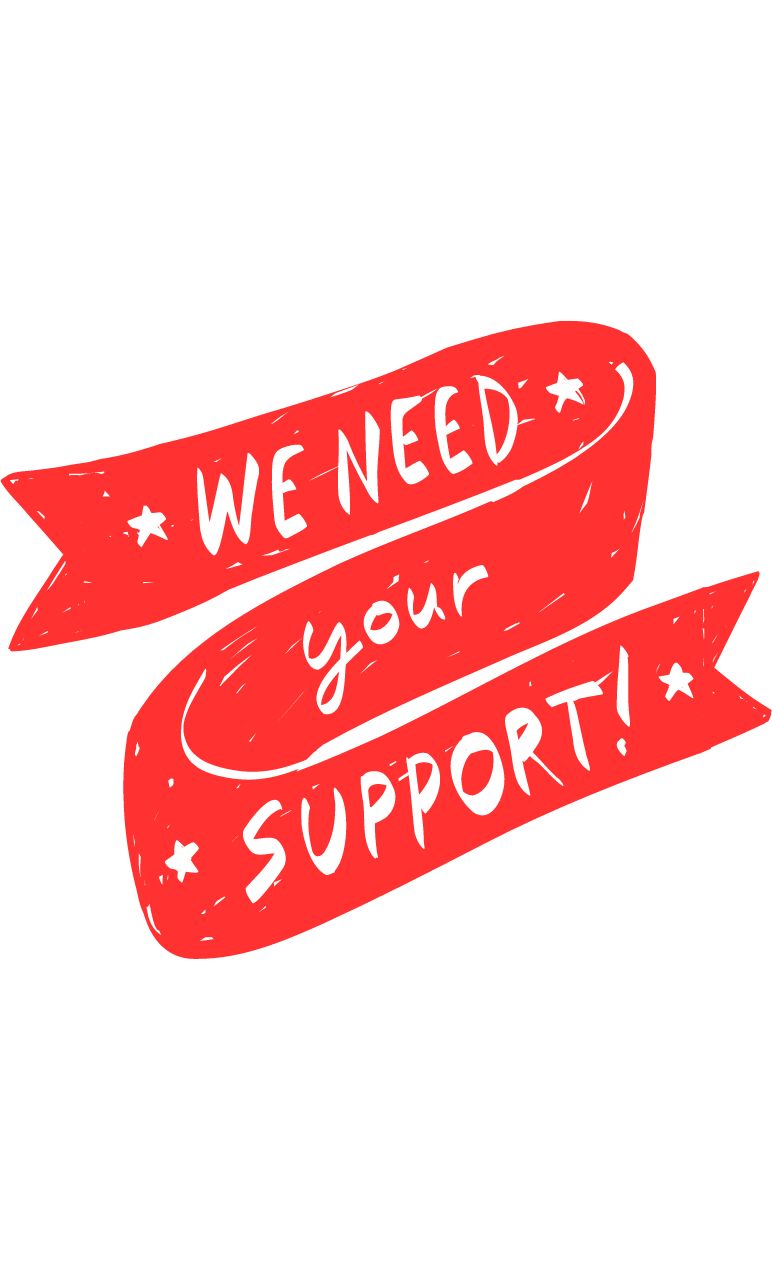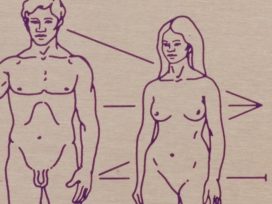Agathe was waiting for me at the door. As always, I was running late. While brushing my teeth, I took my bag from my room and remembered that before leaving I wanted to clean some dirt that I felt when I was taking care of the plants. Rushing and with Couto foam dripping from the corner of my mouth, I ran down the stairs. I held the toothbrush in my mouth so I could take the broom in my right hand and the dustpan in my left, and went upstairs to clean rapidly. Agathe looked at me, surprised, but mostly amused, exclaiming, ‘Oh my God, you really do have ADHD!’
The first time I learned what ADHD was, I was 20 years old. I was attending a seminar on education of children with support needs. At that time, I was volunteering as an educator in a scout group and the purpose of the seminar was to give us tools for proper care for those children.
Emilio, a psychologist with a PhD in Neuropsychology, was the instructor. He started talking about how ADHD presents in children, and from the very first symptom he listed, I felt like he was describing my personality. The first two coincidences were actually funny – and I say coincidences because being a bit ‘forgetful’ and ‘distracted’ doesn’t really mean anything. The thing was, as he kept listing symptoms, I kept relating to all of them: children who cannot measure time properly, they lose track of time and are always late; children who struggle to focus or get lost in hyper-focus; constantly distracted, they cannot keep quiet; always interrupting others mid-sentence, unable to stick to a routine.
Every single one: check, check, check. I saw my life, every little detail, flash before my eyes like a Malick movie – completely zoned out. Finally, my colleagues jolted me back to reality: ‘Sonia, that kid he’s describing – it is you!’ I felt like I was melting in my seat. What did it mean exactly that I fitted perfectly into a ‘child with support needs’ profile?
Earlier that year, Emilio had unintentionally diagnosed my friend Marta. He had asked a group of young people from his scout group to do some tests and evaluations for his PhD research. Marta was one of them. At the end of the process, Emilio told Marta and her mother that he could not include her file because he needed neurotypical participants, which she was not: her results pointed to a diagnosis of ADHD, inattentive type.
ADHD symptoms differ from person to person and are typically categorized into two types: ADHD-Inattentive (ADHD-I), for people exhibiting persistent patterns of distraction, disorganization, and forgetfulness, and ADHD-Hyperactive/Impulsive (ADHD-HI), for those exhibiting higher levels of physical hyperactivity, impulsivity and aggression. More recently, the DSM-5 lists three primary presentations: predominantly inattentive, predominantly hyperactive/impulsive, and combined (little spoiler, the latter one is mine).
Curiously, girls and women – when diagnosed – tend to be categorized under the inattentive type, while boys are frequently diagnosed with the hyperactive one.
It is biology, right?
It is commonly said that boys’ and girls’ brains simply function differently – but how can we really know that? In 1998, Hartung and Widiger analysed 243 studies published in the Journal of Abnormal Child Psychology (USA) over six years. They found an imbalance concerning the sex of participants: in the seventy studies focused on ADHD, 81% of participants were male and only 19% female. They also found that 69 of the 243 studies were conducted exclusively on male children.
Thus, we cannot confidently claim that science confirms biological differences in the human brain based on sex, nor can we clearly define what those differences might be. We basically don’t know, because historically, science has often misrepresented or completely excluded the female body. On the other hand, if we look at Western social norms, we see children are taught to behave differently according to their assigned gender. Social norms play a huge role in shaping how we present ourselves to the world from a very young age.
In 2024, Wettstein et al. conducted a study aiming to assess signs of hyperactivity in adults suspected of having ADHD, addressing the potential sex bias in diagnosis. Using a dataset of more than 15,000 patients – 49% of which were women– their findings suggest that adult women with ADHD suffer equally from hyperactivity as men.
Coping mechanisms: masking and people pleasing
Sandra is a 36-year-old telecommunications engineer, who seemed really calm when I talked with her; she is kind and quiet, and her words come out peacefully. She told me she was diagnosed with inattentive type-ADHD when she was 34, after struggling with her mental health following a major emotional event in her life. I was eager to get to know her better, because the only other woman with ADHD I knew at the time was my friend Marta and, honestly, I never really understood what was the difference between her inattentive type and mine, the combined one.
While the inattentive type is defined by distraction and forgetfulness due to a hyperactive mind – thoughts jumping here and there – it often presents as calm, introverted and serene. The hyperactive type occurs in more evidently vigorous people with disruptive and loud behaviours, impulsive reactions and aggressive outbursts.
As for me, I’ve got both. There are chemical reactions and electrical synapses raving full time in my head, even when I am exhausted and just want to nap with my cat. Most of the time, without medication, I have to dedicate half of my brain power just to behaving like a proper, well-mannered adult.
Still, my friend Marta is a very energetic person, always doing something, always on the move. She started going camping and hiking when she was a little girl, and she also played basketball. If she isn’t working, she’s at the gym or at the beach, or trekking, or playing guitar; she just does, does, does. Basically, she is always ready to fight – metaphorically speaking. It’s like she simply has to release her energy in whatever way she can. However, I’ve noticed that when she is surrounded by people she barely knows, she tends to be more reserved and quieter. In fact, I am also usually more reserved and quieter in new situations and with people I don’t know, conscious of where I put every part of my body. It takes time for both of us to show who we really are.
So, it was quite funny when I asked Sandra about her inattentive type and the traits that shape her seemingly calm personality. Haltingly, smiling timidly, she responded that she is not sure if that calmness isn’t a coping mechanism, a strategy of self-regulation. Sandra grew up feeling invisible at home and, at the same time, not fitting in at school or among other girls. She liked things that were ‘kind of labelled for boys and men’.
‘A girl is not brought up precisely in the same way as a boy: her body is trained for passivity, and her spirit is kept in a state of dependence’, said Simone de Beauvoir in Memoirs of a Dutiful Daughter.
Sandra learned to mask her impulses, to perform as a girl was supposed to, and to navigate life with the constant feeling of frustration of not being as ‘she should’. She wasn’t allowed to just be. ‘The truth is, I am different when I lose control; when I am angry, for example, I start talking faster and faster. I am not sure I am calm at all,’ she explained.
As Quinn and Madhoo suggest, women with ADHD may develop more effective coping strategies than men to mask their symptoms.
‘Behave’ was a command we used to hear a lot when we were young, followed by ‘behave like a little woman’, when we started growing up. Personally, I hated being a girl, I hated what was expected of me for being a girl. I didn’t want to sit with my legs crossed; I wanted to play football with boys instead of being exiled to be chat with other girls on the sides of the playground during recess; I wanted to climb and be strong.
I was a difficult child, a rebellious girl who struggled with authority, while also being one of the top students in my class. My parents didn’t know how to handle me because I was both: a spoiled brat and a perfect child at the same time – a walking contradiction. I was hyperactive, impulsive and aggressive – everybody could see that. But I had to learn how to behave, and I did, just like my fellow female friends did.
Quinn, as cited by Holthe and Langvik, explains that girls, in general, are taught to be polite and compliant. We learn from an early age the importance of an apology. And while boys are encouraged to change the world and become leaders, girls are expected to accept and follow the rules set by parents, teachers and society. We learn not to fight back.
The question then arises for girls and women with ADHD: is there a correlation between being ‘born a girl’, being ‘raised as a girl’, being taught ‘the appropriate behaviour for girls’, and being diagnosed later in life, often with the inattentive type? As we are told to behave like girls or women, we are forced to learn to mask who we really are, or risk being judged for violating feminine norms. Meanwhile, as they saying goes, ‘boys will be boys’.
‘Masking’ is a term used to describe the conscious or unconscious act of suppressing intrinsic behaviours, traits or responses in order to conform to social expectations which neurodivergent people may not organically adopt. It is widely used within the neurodivergent community and is applied by anyone on the spectrum, regardless of their gender identity.
However, in girls and women with ADHD, masking reflects the need to fit not just into neurotypical behaviours, but also gender stereotypes that inhibit our naturally disruptive symptoms. Research indicates the social constructs that are imposed on us often lead to masking and people-pleasing behaviours, contributing to both misdiagnosis and late diagnosis.
As mentioned earlier, historically, women and girls have been pushed to exhibit more empathetic and obedient behaviours. We are taught to prioritize other people’s needs over our own, which often leads to patterns of people-pleasing and self-neglecting in order to satisfy those around us. As a result, many of us grow up without knowing how to set limits and, in some cases, without being able to recognize what our boundaries even are. From an early age, this induces the feelings of discomfort and inadequacy, because how we intrinsically feel doesn’t align with how we are supposed to feel.
Another young woman I talked to, Mia, diagnosed at 23, told me she grew up thinking she was ‘just a bad person’ because she couldn’t keep her attention focused when her friends were talking to her. She condemned herself not to have deep, meaningful connections, because for her, not being able to pay attention meant she didn’t care – as if she were disregarding the wellbeing of those close to her. Despite being deeply empathetic and actively engaged with social causes from an early age, she thought she was a bad person for getting distracted while talking to people.
Inês, diagnosed at 26, had a similar experience: she used to see herself as ‘a bad child, a bad student’. Gabriela, diagnosed at 31, grew up constantly apologizing and blaming herself for her ‘flaws’, since she didn’t have an explanation for those ‘personality traits’ that often put her in conflict with others.
Not knowing our brains work differently made us carry guilt and frustration during those crucial years when teens are building the person they are becoming, with constant mottos and cries of failure such as ‘I didn’t do it on purpose!’ (Gabriela), ‘I just want to be normal!’(myself) or ‘I don’t belong to this world’ (Adriana, diagnosed at 33). We all remember situations when we said or did harmful things out of impulsivity because we couldn’t control ourselves in that moment, and that made us feel guilty and inappropriate.
These feelings of insufficiency and incapability set the perfect foundation for low self-esteem, along with the big elephant in the room: mental health problems that girls, teen and adult women both with and without an ADHD diagnosis also suffer from, regardless of their socio-economic background or geographical context.
There are higher rates of comorbidities such as depression, anxiety or eating disorders in girls and women with an undiagnosed ADHD. Therefore, women are often diagnosed and treated for a comorbid condition before getting an ADHD diagnosis. In 2005, Quinn found that 14% of girls with ADHD had been taking antidepressants before finally receiving appropriate treatment for their ADHD, compared to just 5% of boys. For instance, I was 15 years old the first time I took diazepam, when I started having anxiety crisis that nobody fully understood at the time.
The truth is, and now I know, the dichotomy between being the perfect girl – the one who met academic expectations, who was popular at school, well behaved, and who knew what she wanted, and the chaotic girl – the one who didn’t really understand social dynamics and felt isolated most of the time, couldn’t sleep at night, and felt out of control – was crushing my mental health.
It was in this period that suicidal thoughts started appearing. My social anxiety led me to put myself in tricky situations, spending sleepless nights online, socializing with people much older than me, or drinking absurd amounts of alcohol. Meanwhile, my deep craving for connection pushed me toward early sexual experiences. Feeling like I didn’t fit in, I performed as an adventurous, fearless girl, who was just questioning the rules imposed on her.
Adriana has a story similar to mine. She doesn’t remember the first time she idealized death because those thoughts had been with her ‘forever’. She, too, assumed the role of the bad girl, sexualizing herself from an early age and using alcohol as an emotional outlet. We were two teenagers from completely different backgrounds, both lost in our emotional dysregulation, feeling like we didn’t belong anywhere, both struggling to form healthy relationships and seeking solace in alcohol and hyper-sexuality.
A study by Young et al. found that ‘throughout adolescence and the transition into adulthood, there is an increase in risk taking behaviour which may be associated with symptoms of hyperactivity and/or impulsivity’. There is a high rate of teens with ADHD who engage in alcohol, tobacco or drug use, and risky sexual behaviours. It is kind of normal that teenagers start to get adventurous and explore unknown and forbidden worlds, but for teenage girls who don’t even understand what ‘normal’ is, the chances of engaging in and accepting harmful or abusive experiences are much higher – especially because it was us who put ourselves in those situations. Low self-esteem, confusion and social stigma can leave us more vulnerable to sexual harassment, exploitation and abusive or inappropriate relationships.
Being ‘normal’ is a big topic as we enter adulthood. Growing up is not easy for anybody –there are many possibilities and paths to explore – but having an undiagnosed neurological condition makes this process even harder and sometimes deeply painful. When asked how the diagnosis influenced their life, all the women I interviewed gave the same answer: it improved it.
An ‘illness’ you have to fight to get
Lately, you can often read or hear that ‘now everybody has ADHD’, as if having ADHD were just a trend, a silly dance on TikTok. In reality, it is not that easy to get a diagnosis as a girl or as an adult woman. As previously explained, girls have historically been under-diagnosed because ADHD used to be considered ‘a boys’ condition’. Nowadays, the rate of diagnosis in children is 3:1 of boys to girls.
Teenage and adult women have to fight for their diagnosis – even if we are lucky enough to be in therapy before getting it. In Portugal, ADHD was not even considered as a possible condition in adults until 2023, despite having already been contemplated in the DSM-5 back in 2013.
In my case, after three years in therapy for anxiety and depression, and almost 15 years after my first diazepam intake; 10 years of wondering ‘what if’, reading papers, case studies, and recognizing myself in ADHD symptoms, I finally suggested to my therapist that I may have ADHD. Her response was to ask why I felt the need to get a label. I tried to explain that I didn’t need a label – I needed to understand myself, which was the reason I had come to therapy in the first place. After that, I couldn’t stop thinking if perhaps she wasn’t familiar with the condition, if she could not understand what I was going through or acknowledge my needs. Either way, that was our last session.
All my life, I was convinced I was somehow ‘wrong’, that I was lazy, mediocre and an impostor; that I would end up a failure because I lacked responsibility and self-discipline to be a successful adult. I kept wondering why I was like that. If everybody said I was intelligent and diligent, if I used to do well at school, if I had talent, why I couldn’t focus and work on my goals? I wanted answers and I may have found them. I wanted to get a diagnosis, not because I wanted a label, but because I wanted to understand what was happening to me and why I felt that my brain was mocking me and betraying me half the time.
I got my diagnosis when I was 31 years old. It took me almost two years to get it, largely thanks to patience and an understanding female doctor who helped me endure the long waiting list to see a psychiatrist through the public health system.
Adriana was diagnosed at 33 but only after some conflicts with her family and her doctors. She also had to invest a lot of money, and went through another big struggle for her mental health. It was the same for Sandra, whose therapist dismissed her and ignored her pleas for an assessment. Finally, she had to drive kilometres during many afternoons with her dad to go to a psychiatrist who agreed to test her. Inês, diagnosed at 26, also had to consult a private physician to get diagnosed. She was so anxious about being dismissed that she made a long and detailed list of the symptoms and traits that accompanied her all her life. Gabriela had similar worries: when she went to get her diagnosis at 31, she was afraid she would not be taken seriously, ‘because of, you know, all the gender bias you find out there’.
Only Mia and Rita felt they were lucky when they got their diagnoses. Mia, who was 23 at the time, was simply referred by her therapist. Rita was diagnosed at 19, after a period of chronic insomnia that was gravely affecting her quality of life. She sought help and was soon diagnosed with ADHD.
Once the diagnosis was known, treatment could follow. There is not cure for ADHD, as it is not an illness, but an inherent condition – simply another way of being. Treatment consists of two approaches that aim to reduce the impact of symptoms on daily life: cognitive behavioural therapy and medication.
Therapy is the main focus for children, so they can learn from an early age how their brain works and what strategies suit them best. Adults, on the other hand – many of whom grew up developing comorbidities like depression and anxiety – need therapy to unlearn bad habits and negative patterns, and in many cases, deal with unresolved trauma.
The main problem is that, nowadays, psychotherapy is not available at most public health systems – or if it is, it is extremely difficult to get regular appointments, which is why the access to it depends on one’s economic capacity. In my case, as an aspirational journalist who doesn’t really understand money, psychotherapy has been a luxury I could only afford during specific periods of my life. The rest of the time, I depended on already learnt strategies of compassion and self-understanding to keep going on my own.
In such cases, prescribed medication is fundamental to managing our condition. As we passed through the confusion of youth not knowing what was really happening with our brains, some of us cried from joy the first time we took ADHD medication, because for the first time, there was a sense of harmony in our mind, a truce in a war we hadn’t even known we were fighting. ‘Is this how “normal’ people feel, normally?’ was my first thought, as a strange sense of organization settled in my chest. ‘I guess that’s what having chakras aligned feels like’, I joked to myself.
We take CNS (central nervous system) stimulants such as Methylphenidate – the most commonly prescribed psychoactive drug for ADHD treatment. Fifty years ago, the scientific basis for its therapeutic effects was still poorly understood. However, new research exploring its influence on the ADHD-affected brain led to a revolutionary hypothesis: our brains lose dopamine, and it is the inability to regulate the concentration of extracellular dopamine that contributes to the development of this neurodevelopmental disorder.
Dopamine is a neurotransmitter and a hormone. Its receptors are primarily located in the central nervous system and play an essential role in daily functions, affecting movement, emotions, and the brain’s reward system, along with sleep, memory and impulse control. In practice, this translates to symptoms such as relentlessness, emotional dysfunction, lack of motivation, insomnia, distractibility, impulsiveness and aggression – in short, the combined type ADHD.
One of the symptoms my former therapist misdiagnosed as depression was my inability to get out of bed. I’ve had depressive episodes before and, in that moment, I didn’t like that I was having one. After getting my diagnosis and my Methylphenidate prescription, I also plotted a strategy: every night, I set my alarm twenty minutes before I actually wanted to get up the next morning. I kept my medication and some water beside my pillow, so when the time comes, when my alarm goes off, I take my pills in the dark, I close my eyes again, and less than half an hour later, the drug kicks in and I am ready to get up and take on the world.
Now I can finally have calm mornings – a habit I always wished for but could never achieve. Treatment gives us the chance to believe we can be what we truly are; not who we’re supposed to be, but who we dream of becoming. Rita, who is almost ten years younger than me, inspired me deeply when she told me, ‘I am not more flawed or less capable than anybody. I will never look for pity.’ Her brain simply functions in a different way, and this may sometimes be a challenge, but it is not a life obstacle.
The relief of ‘the label’ is, indeed, the relief of finally being able to understand ourselves, to confirm we are not broken or wrong; it gives us a chance to be comprehended and, finally, seen. So now we can create functioning strategies instead of masking behaviours; we can be more compassionate with ourselves when we make ‘stupid’ mistakes; we can explain ourselves to others; we can ask for help without feeling less valid. In doing so, we can create new ways of living, not just for ourselves, but for every human being, so that everyone can flourish to their full potential, without forcing those who are different to adapt to outdated rules and beliefs.
For neurodivergences in all the spectrum, autism, trisomy 21 and all those not-that-well-known conditions are just part of the diversity of life. Recognizing them, validating them, and celebrating them is not just a ‘woke’ trend; it is our duty as an evolved society that makes space for everybody, that appreciates life in all its forms. That should be the next step in human evolution: adapting our social constructs to fit lived lives – not the opposite.
Author’s note:
One important topic I didn’t explore here is how hormones affect our ADHD brains – not because it’s not relevant, but because I couldn’t find enough solid scientific research to do it justice, even though it is mentioned in several papers. I hope future studies will help shed light on this, so we can better understand ourselves in all our complexity.
I would like to thank Adriana, Gabriela, Inês, Marta, Mia, Rita and Sandra for their time but mostly for their willingness to share their stories with me and the world. Without their perspectives and experiences, I wouldn’t have been able to bring this piece together. I hope I did justice to their stories, and that this work helps women – with or without diagnosis – feel seen and a little less alone in their journey.
This article was published under the Come Together journalism fellowship programme organized by Kurziv. The article was originally published by Voxfeminae.









